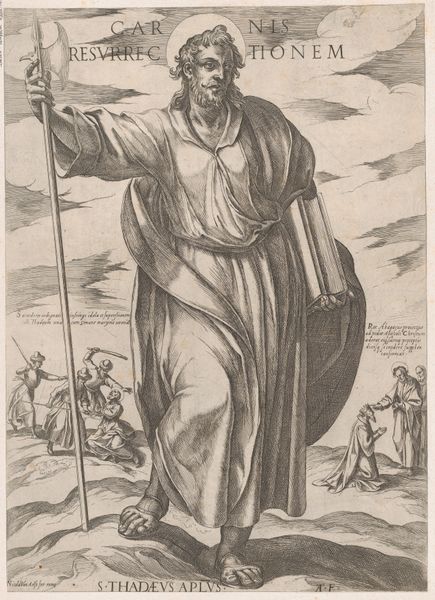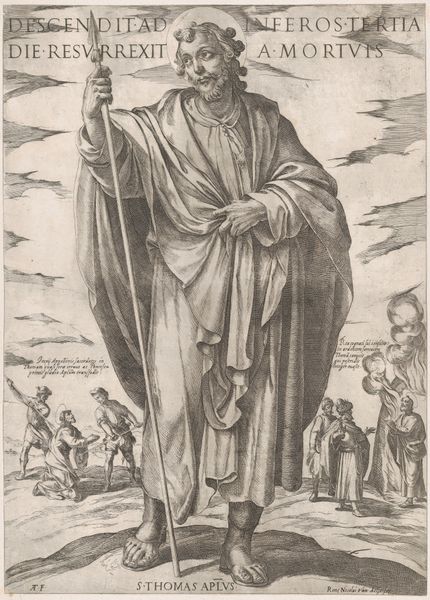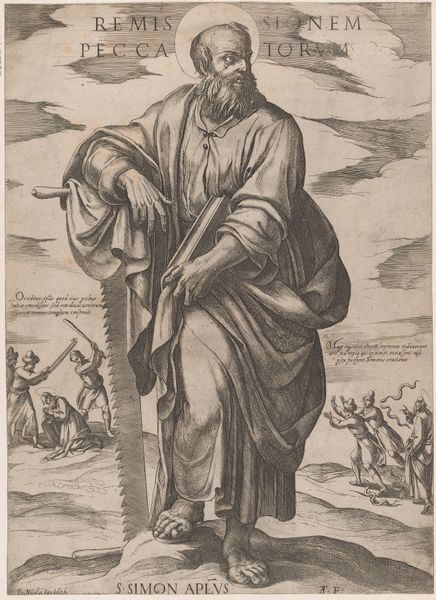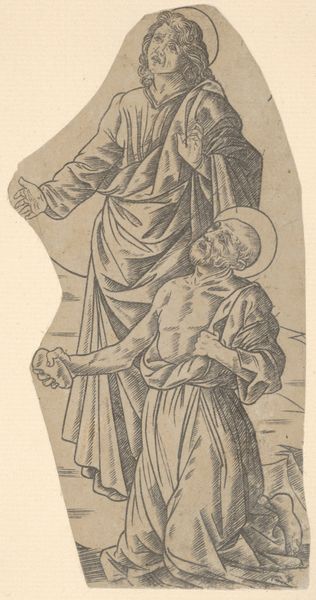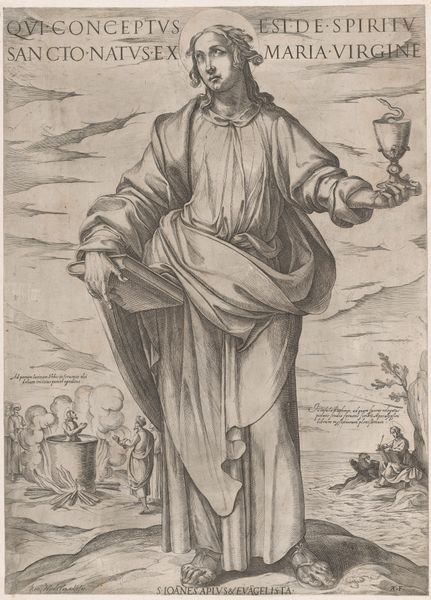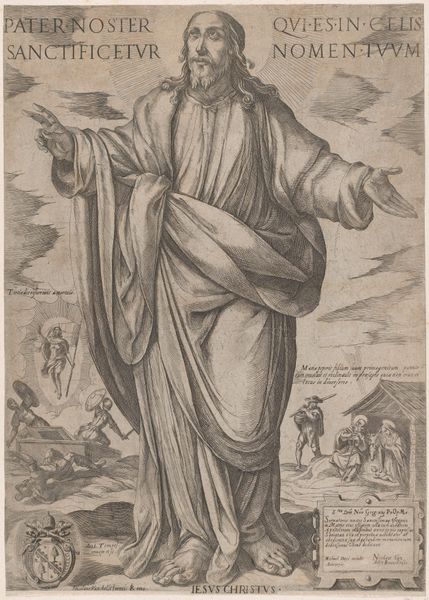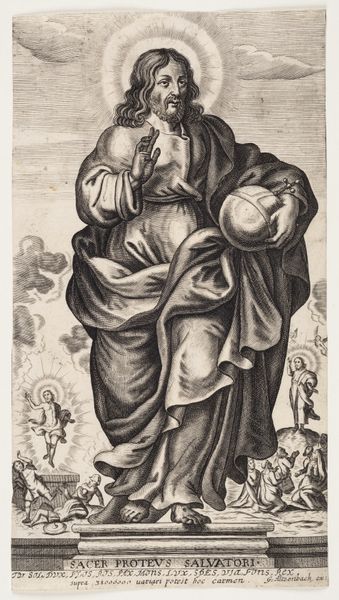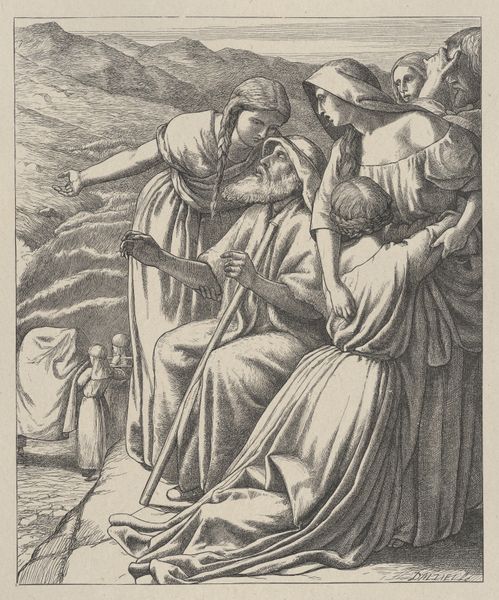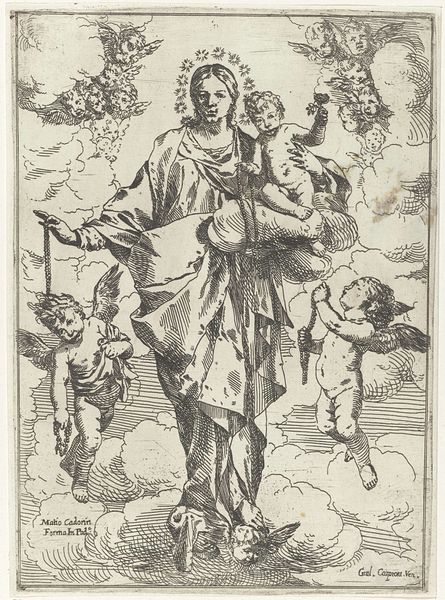
St. Matthew, from 'Christ, Mary, and the Apostles' 1585 - 1615
0:00
0:00
drawing, print, engraving
#
portrait
#
drawing
#
baroque
# print
#
history-painting
#
engraving
Dimensions: Sheet: 20 1/2 × 14 3/4 in. (52 × 37.5 cm)
Copyright: Public Domain
Antonio Tempesta made this engraving of St. Matthew in the late 16th or early 17th century. It's printed on a sheet of paper, using the reductive process of engraving. The artist would have used a tool called a burin to manually carve lines into a copper plate. Ink is then pressed into those lines, and the plate is pressed onto the paper to transfer the image. Engraving was a highly skilled, labor-intensive process. Each line had to be carefully considered to create the effects of light, shadow, and texture that you see here. Notice the fine, dense lines that define the folds of St. Matthew’s robe, versus the more open lines used to depict the sky. Prints like this one were often produced in multiples and were relatively accessible, allowing for wider dissemination of images and ideas than unique paintings. The making of the work and its eventual distribution speak to the intersection of artistic skill, technological processes, and emerging markets for art in early modern Europe. By appreciating how it was made, we can understand its cultural significance.
Comments
No comments
Be the first to comment and join the conversation on the ultimate creative platform.
